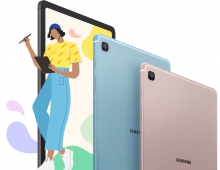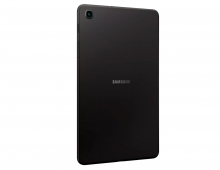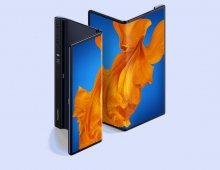
Tablet Shipments to Surpass Portable PC Shipments This Year
International Data Corporation (IDC) forecasts that tablet shipments will exceed those of portable PCs this year, as the slumping PC market is expected to see negative growth for the second consecutive year.
IDC expects tablet shipments to grow 58.7% year-over-year in 2013 reaching 229.3 million units, up from 144.5 million units last year. In addition, IDC expects tablet shipments to outpace the entire PC market (portables and desktops combined) by 2015.
"What started as a sign of tough economic times has quickly shifted to a change in the global computing paradigm with mobile being the primary benefactor," said Ryan Reith, Program Manager for IDC's Mobility Trackers. "Tablets surpassing portables in 2013, and total PCs in 2015, marks a significant change in consumer attitudes about compute devices and the applications and ecosystems that power them. IDC continues to believe that PCs will have an important role in this new era of computing, especially among business users. But for many consumers, a tablet is a simple and elegant solution for core use cases that were previously addressed by the PC."
Source: Forecast Data, IDC Worldwide Tablet Tracker, May 28, 2013,
While Apple has been at the forefront of the tablet revolution, the current market expansion has been increasingly fueled by low-cost Android devices. In 2013, the worldwide average selling price (ASP) for tablets is expected to decline -10.8% to $381. In comparison, the ASP of a PC in 2013 is nearly double that at $635. IDC expects tablet prices to decline further, which will allow vendors to deliver a viable computing experience into the hands of many more people at price points the PC industry has strived to meet for years.
"Apple's success in the education market has proven that tablets can be used as more than just a content consumption or gaming device," said Jitesh Ubrani, Research Analyst for the Worldwide Quarterly Tablet Tracker. "These devices are learning companions, and as tablet prices continue to drop, the dream of having a PC for every child gets replaced with the reality that we can actually provide a tablet for every child."
In addition to lower prices, another major shift in the tablet market has occurred around screen sizes. Apple's first generation iPad, which included a 9.7-inch display, was perceived by many as the sweet spot for tablets. That is, until 7-inch Android-based tablets began to gain traction in the market. Apple responded with the iPad mini in the fourth quarter of 2012, and in the space of two quarters the sub-8-inch category exploded to overtake the larger-sized segment in terms of total shipments.
Reflecting the shift in PC buying trends as users increasingly consider alternatives such as delaying a PC purchase or using tablets and smartphones for more of their computing needs, IDC hjas also revised its worldwide PC shipments forecast. The research firm now expects PS shipments to fall by -7.8% in 2013. In place of a limited decline of -1.3% in 2013 followed by a gradual increase in volume, the new outlook calls for a more substantial decline of -7.8% in 2013 and -1.2% in 2014 with shipment volume reaching only 333 million in 2017 ? still below the 349 million shipped in 2012 and a peak of more than 363 million shipped in 2011.
IDC expects to see some replacements happen in 2014, particularly in the commercial segment as support for Windows XP expires. However, the commercial market has been conservative with replacements, focusing on individual systems more than large upgrade projects. In addition, workers at many companies already have portable PCs with adequate configurations. The motivation to buy a new system due to falling prices or to switch from a desktop to a portable PC is contributing less to market growth than it did in the past.
"What started as a sign of tough economic times has quickly shifted to a change in the global computing paradigm with mobile being the primary benefactor," said Ryan Reith, Program Manager for IDC's Mobility Trackers. "Tablets surpassing portables in 2013, and total PCs in 2015, marks a significant change in consumer attitudes about compute devices and the applications and ecosystems that power them. IDC continues to believe that PCs will have an important role in this new era of computing, especially among business users. But for many consumers, a tablet is a simple and elegant solution for core use cases that were previously addressed by the PC."
Worldwide Tablet Market Share by Screen Size Band, 2011 - 2017
Screen Size |
2011 |
2013 |
2017 |
< 8" |
27% |
55% |
57% |
8" – 11" |
73% |
43% |
37% |
11"+ |
0% |
2% |
6% |
Total |
100% |
100% |
100% |
Source: Forecast Data, IDC Worldwide Tablet Tracker, May 28, 2013,
Notes:
- Shipments include shipments to distribution channels or end users. OEM sales are counted under the vendor/brand under which they are sold.
- IDC considers all LCD-based slate devices with screens between 7 and 16 inches as tablets, regardless of whether or not they include a removable keyboard (such as the Surface RT). Convertible devices with non-removable keyboards (such as Lenovo's Yoga) are not counted as Tablets.
While Apple has been at the forefront of the tablet revolution, the current market expansion has been increasingly fueled by low-cost Android devices. In 2013, the worldwide average selling price (ASP) for tablets is expected to decline -10.8% to $381. In comparison, the ASP of a PC in 2013 is nearly double that at $635. IDC expects tablet prices to decline further, which will allow vendors to deliver a viable computing experience into the hands of many more people at price points the PC industry has strived to meet for years.
"Apple's success in the education market has proven that tablets can be used as more than just a content consumption or gaming device," said Jitesh Ubrani, Research Analyst for the Worldwide Quarterly Tablet Tracker. "These devices are learning companions, and as tablet prices continue to drop, the dream of having a PC for every child gets replaced with the reality that we can actually provide a tablet for every child."
In addition to lower prices, another major shift in the tablet market has occurred around screen sizes. Apple's first generation iPad, which included a 9.7-inch display, was perceived by many as the sweet spot for tablets. That is, until 7-inch Android-based tablets began to gain traction in the market. Apple responded with the iPad mini in the fourth quarter of 2012, and in the space of two quarters the sub-8-inch category exploded to overtake the larger-sized segment in terms of total shipments.
Reflecting the shift in PC buying trends as users increasingly consider alternatives such as delaying a PC purchase or using tablets and smartphones for more of their computing needs, IDC hjas also revised its worldwide PC shipments forecast. The research firm now expects PS shipments to fall by -7.8% in 2013. In place of a limited decline of -1.3% in 2013 followed by a gradual increase in volume, the new outlook calls for a more substantial decline of -7.8% in 2013 and -1.2% in 2014 with shipment volume reaching only 333 million in 2017 ? still below the 349 million shipped in 2012 and a peak of more than 363 million shipped in 2011.
IDC expects to see some replacements happen in 2014, particularly in the commercial segment as support for Windows XP expires. However, the commercial market has been conservative with replacements, focusing on individual systems more than large upgrade projects. In addition, workers at many companies already have portable PCs with adequate configurations. The motivation to buy a new system due to falling prices or to switch from a desktop to a portable PC is contributing less to market growth than it did in the past.





















